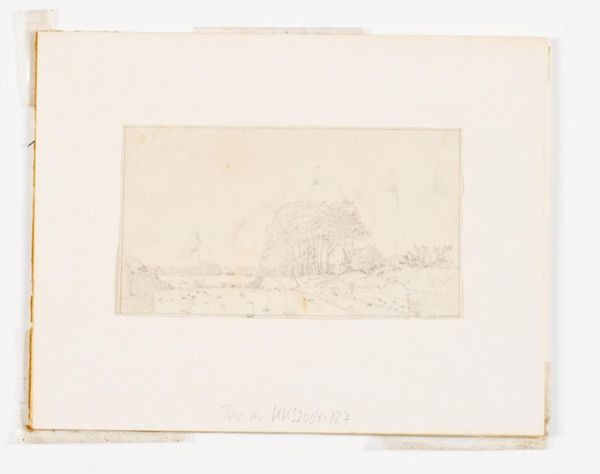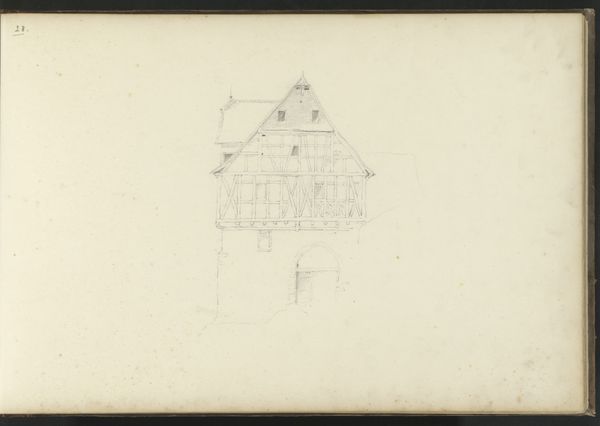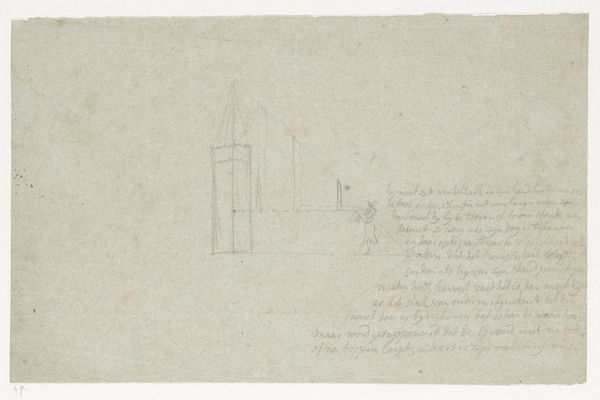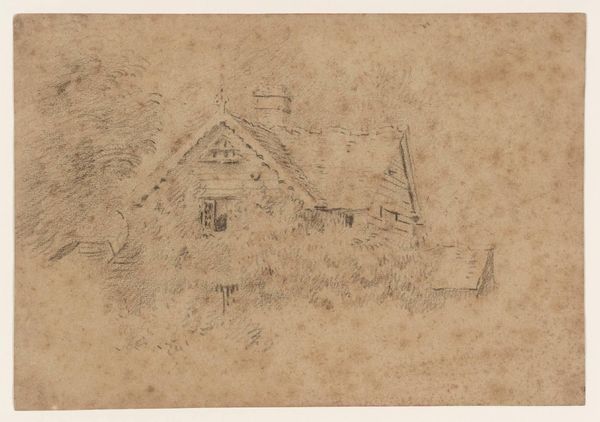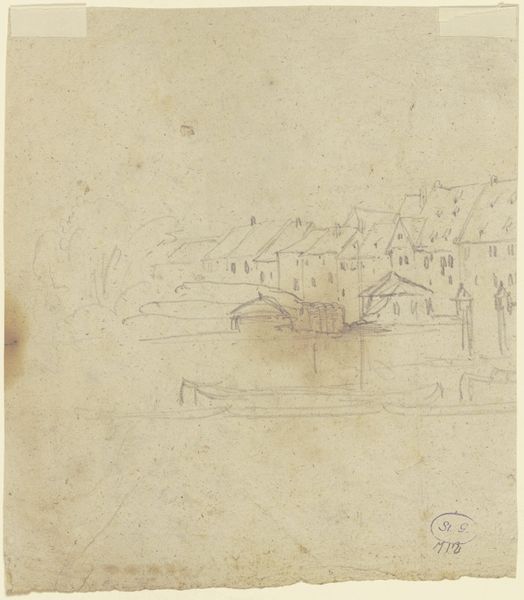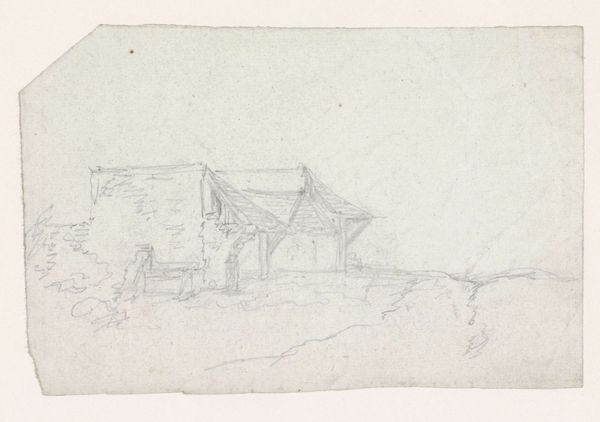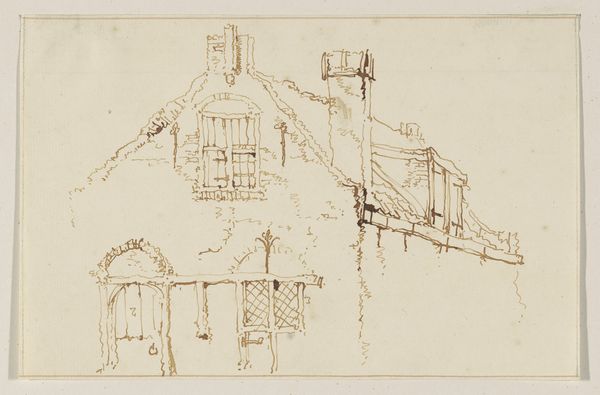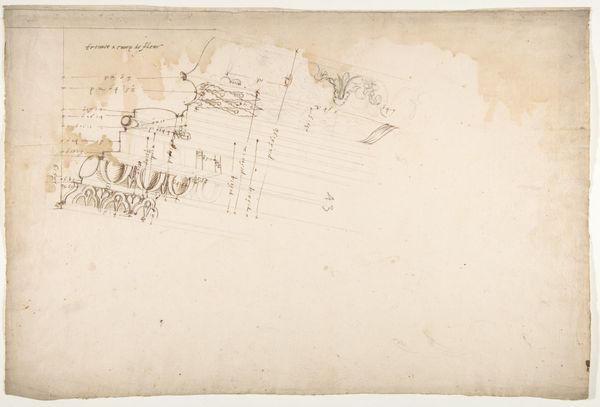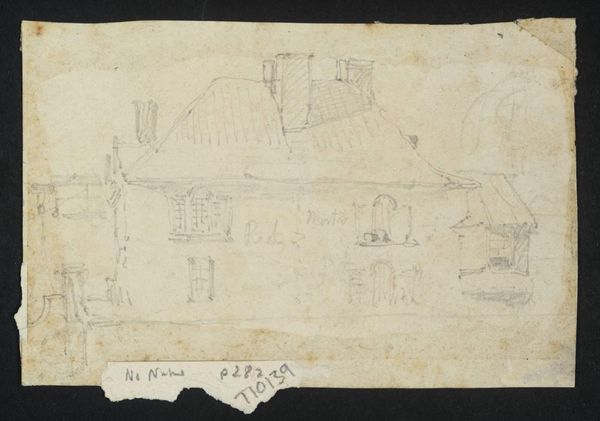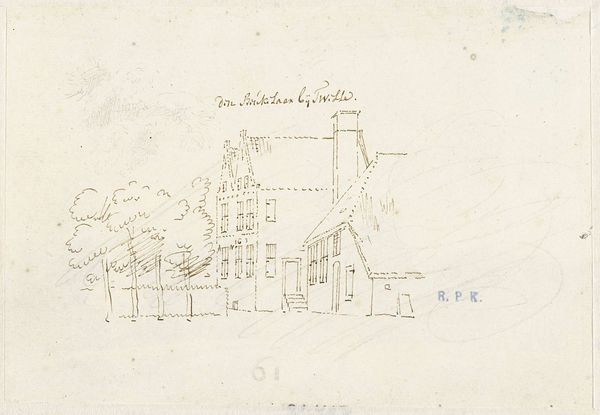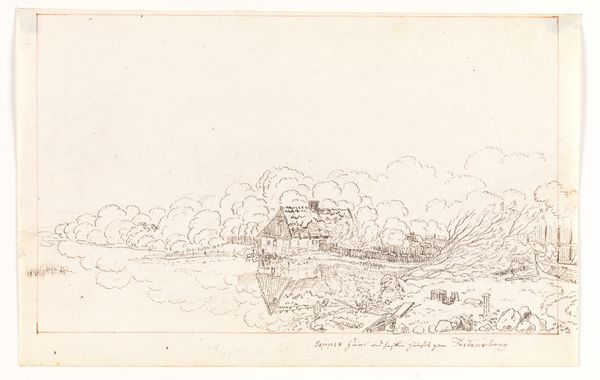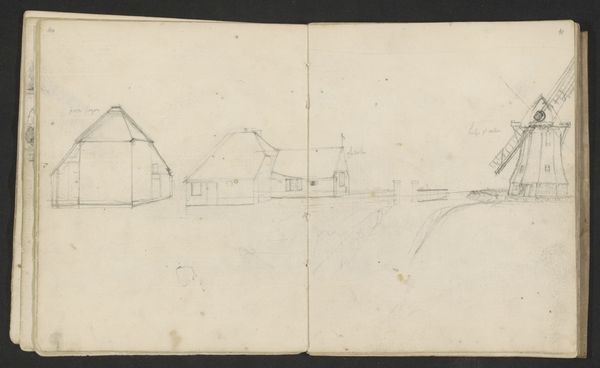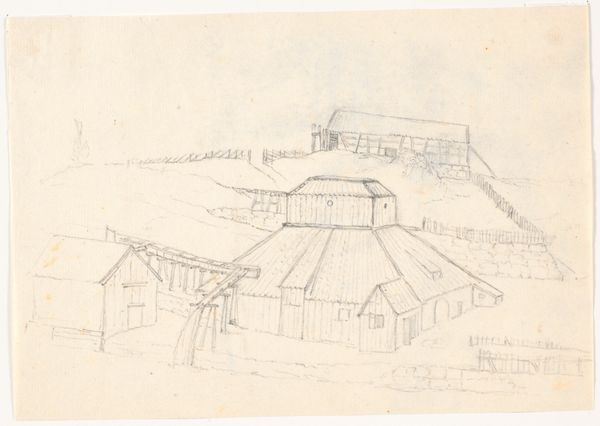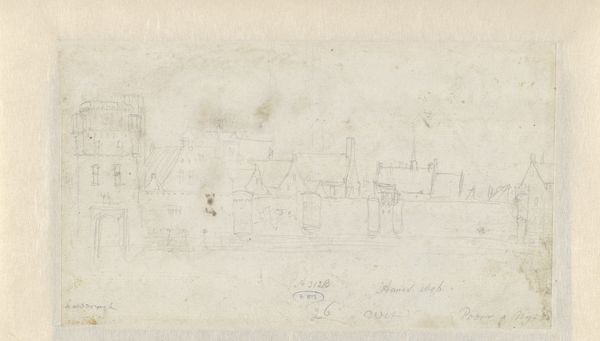
drawing, pencil
#
drawing
#
aged paper
#
toned paper
#
light pencil work
#
baroque
#
sketch book
#
landscape
#
personal sketchbook
#
pencil
#
ink colored
#
sketchbook drawing
#
cityscape
#
watercolour illustration
#
sketchbook art
#
watercolor
Dimensions: height 147 mm, width 190 mm
Copyright: Rijks Museum: Open Domain
Jan de Beijer's delicate drawing from 1748 captures Het Riddermatig Huys te Breij with simple lines, emphasizing the architecture's rustic charm. The thatched roofs speak of rural life, while the house itself suggests a history rooted in the land. But look closer – what is the symbolic weight of a house? Houses are ancient symbols, far more than mere shelters. They are echoes of communal life, of family, and of the self. In ancient Egypt, houses were tombs and temples, eternal dwellings for the soul. Later, in medieval tapestries, they served as the backdrop for courtly life. Here, in de Beijer's sketch, the house stands as a quiet witness to Dutch history, an image of steadfastness amid ever-changing times. Consider how such dwellings persist in our collective memory. They echo in our dreams, representing safety, refuge, but also the confines of our own making. De Beijer evokes not just a building, but the silent drama of human existence.
Comments
No comments
Be the first to comment and join the conversation on the ultimate creative platform.
